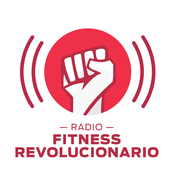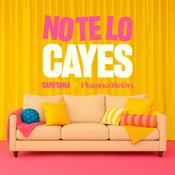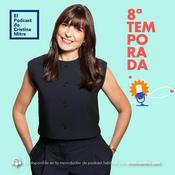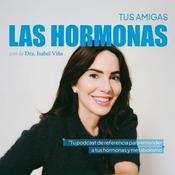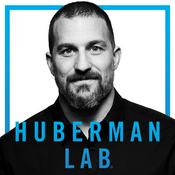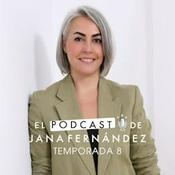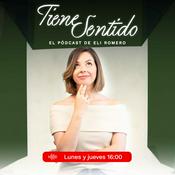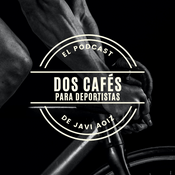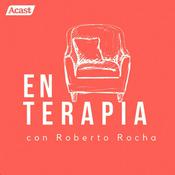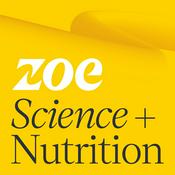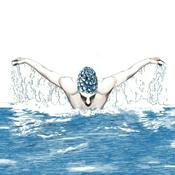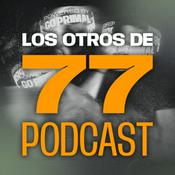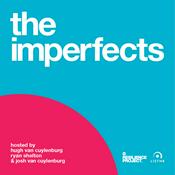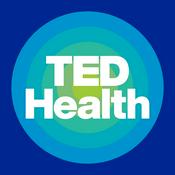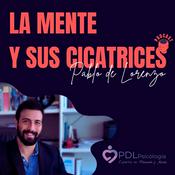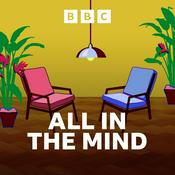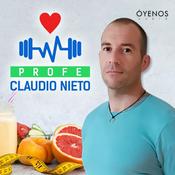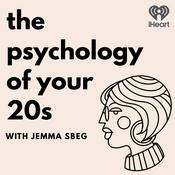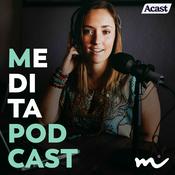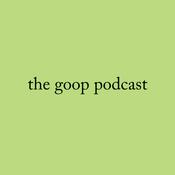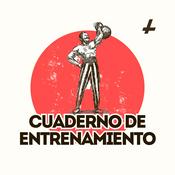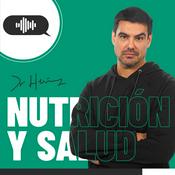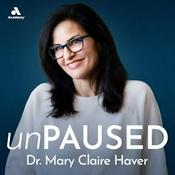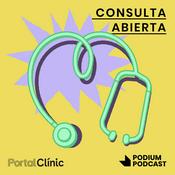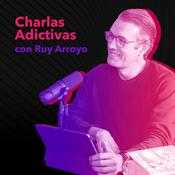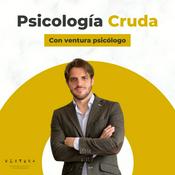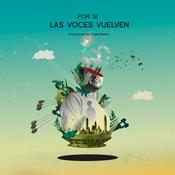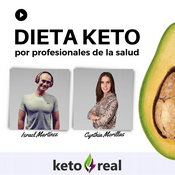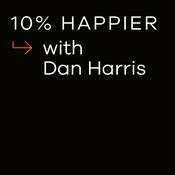Episodios disponibles
5 de 353
- The future of ribosomesMaria Barna is an authority on ribosomes – “life’s most ancient and spectacular molecular machines.” Ribosomes make proteins in the body. There can be a thousand different types of ribosomes in a single cell, she says, each with a specific job to do. But sometimes things go awry and ribosomes get “hijacked,” leading to disease. Barna studies these “diabolical” variations to find new therapies to treat diseases ranging from cancer and COVID to Parkinson’s. When diseases hit, it’s all about the ribosomes, Barna tells host Russ Altman on this episode of Stanford Engineering’s The Future of Everything podcast.Have a question for Russ? Send it our way in writing or via voice memo, and it might be featured on an upcoming episode. Please introduce yourself, let us know where you're listening from, and share your question. You can send questions to [email protected] Reference Links:Stanford Profile: Maria BarnaConnect With Us:Episode Transcripts >>> The Future of Everything WebsiteConnect with Russ >>> Threads / Bluesky / MastodonConnect with School of Engineering >>> Twitter/X / Instagram / LinkedIn / FacebookChapters:(00:00:00) IntroductionRuss Altman introduces guest Maria Barna, a professor of genetics at Stanford University.(00:04:21) Origins of Ribosome ResearchMaria explains why ribosomes became the focus of her work.(00:06:14) Ribosome Function and ScaleRibosomes’ functions and the energy required for their production.(00:08:28) Ribosomes as MachinesHow ribosomes influence which proteins are produced and when.(00:09:48) Ribosome RegulationThe regulatory layers within ribosomes and their possible variants.(00:14:35) Ribosomes and DiseaseHow ribosomal dysfunction is linked to a wide range of diseases.(00:18:16) Ribosome Mutations and DevelopmentCongenital disorders that can be attributed to specific ribosomal mutations.(00:20:44) RNA vs. Protein OutputWhy RNA measurements alone do not accurately predict protein levels.(00:24:16) Designing Ribosomes for TherapyThe potential of using engineered ribosomes for target therapies.(00:26:16) Small-Molecule Ribosome ModulatorsScreening compounds that may enhance ribosome activity for treatments.(00:28:39) Future Ribosome ProfilingIsolating individual ribosomes to understand their specific roles.(00:30:35) Future In a MinuteRapid-fire Q&A: scientific progress, community, and alternative career interest.(00:34:01) Conclusion Connect With Us:Episode Transcripts >>> The Future of Everything WebsiteConnect with Russ >>> Threads / Bluesky / MastodonConnect with School of Engineering >>>Twitter/X / Instagram / LinkedIn / Facebook Hosted by Simplecast, an AdsWizz company. See pcm.adswizz.com for information about our collection and use of personal data for advertising.--------34:40
- Best of: How to take waste out of wastewaterIn October, chemical engineer Will Tarpeh was awarded a 2025 MacArthur “Genius Grant” in recognition of his pioneering work to turn wastewater into a source of valuable materials. Will envisions a future in which the concept of wastewater is obsolete, thanks to advances in recycling. A couple of years ago, we sat down to talk with him about this work, and we hope you’ll take another listen today to learn more about the research Will is doing to transform the potential of wastewater into resources.Have a question for Russ? Send it our way in writing or via voice memo, and it might be featured on an upcoming episode. Please introduce yourself, let us know where you're listening from, and share your question. You can send questions to [email protected] Reference Links:Stanford Profile: William Abraham TarpehConnect With Us:Episode Transcripts >>> The Future of Everything WebsiteConnect with Russ >>> Threads / Bluesky / MastodonConnect with School of Engineering >>> Twitter/X / Instagram / LinkedIn / FacebookChapters:(00:00:00) IntroductionRuss Altman introduces Will Tarpeh, a professor of chemical engineering at Stanford University.(00:03:01) Wastewater as a Modern MineHow elements like nitrogen and phosphorus can be recovered from waste.(00:04:15) Path to Sanitation ResearchWill shares what led to his interest in studying wastewater.(00:06:55) The Science of SeparationThe electrochemical and material techniques to extract valuable compounds.(00:08:37) Urine-Based FertilizerHow human urine could meet up to 30% of global fertilizer needs.(00:11:08) Drugs in WastewaterThe potential of reclaiming pharmaceuticals from waste streams.(00:14:14) Decentralized SanitationOpportunities for neighborhood or household-scale treatment systems.(00:16:48) Source Separation SystemsHow dividing waste at the source improves recycling and recovery.(00:18:56) Global Sanitation ChallengesWays that developing countries can adopt modern waste solutions.(00:23:51) Preventing Algal BloomsThe systems that are helping to reduce nutrient pollution and dead zones.(00:27:16) The Urine SummitA community advancing urine recycling and sustainable sanitation policy.(00:28:43) Conclusion Connect With Us:Episode Transcripts >>> The Future of Everything WebsiteConnect with Russ >>> Threads / Bluesky / MastodonConnect with School of Engineering >>>Twitter/X / Instagram / LinkedIn / Facebook Hosted by Simplecast, an AdsWizz company. See pcm.adswizz.com for information about our collection and use of personal data for advertising.--------29:19
- The future of digital marketsGabriel Weintraub studies how digital markets evolve. In that regard, he says platforms like Amazon, Uber, and Airbnb have already disrupted multiple verticals through their use of data and digital technologies. Now, they face both the opportunity and the challenge of leveraging AI to further transform markets, while doing so in a responsible and accountable way. Weintraub is also applying these insights to ease friction and accelerate results in government procurement and regulation. Ultimately, we must fall in love with solving the problem, not with the technology itself, Weintraub tells host Russ Altman on this episode of Stanford Engineering’s The Future of Everything podcast.Have a question for Russ? Send it our way in writing or via voice memo, and it might be featured on an upcoming episode. Please introduce yourself, let us know where you're listening from, and share your question. You can send questions to [email protected] Reference Links:Stanford Profile: Gabriel WeintraubConnect With Us:Episode Transcripts >>> The Future of Everything WebsiteConnect with Russ >>> Threads / Bluesky / MastodonConnect with School of Engineering >>> Twitter/X / Instagram / LinkedIn / FacebookChapters:(00:00:00) IntroductionRuss Altman introduces guest Gabriel Weintraub, a professor of operations, information, and technology at Stanford University.(00:03:00) School Lunches to Digital PlatformsHow designing markets in Chile led Gabriel to study digital marketplaces.(00:03:57) What Makes a Good MarketOutlining the core principles that constitute a well-functioning market.(00:05:29) Opportunities and Challenges OnlineThe challenges associated with the vast data visibility of digital markets.(00:06:56) AI and the Future of SearchHow AI and LLMs could revolutionize digital platforms.(00:08:15) Rise of Vertical MarketplacesThe new specialized markets that curate supply and ensure quality.(00:10:23) Winners and Losers in Market ShiftsHow technology is reshaping industries from real estate to travel.(00:12:38) Government Procurement in ChileApplying market design and AI tools to Chile’s procurement system.(00:15:00) Leadership and AdoptionThe role of leadership in modernizing government systems.(00:18:59) AI in Government and RegulationUsing AI to help governments streamline complex bureaucratic systems.(00:21:45) Streamlining Construction PermitsPiloting AI tools to speed up municipal construction-permit approvals.(00:23:20) Building an AI StrategyCreating an AI strategy that aligns with business or policy goals.(00:25:26) Workforce and ExperimentationTraining employees to experiment with LLMs and explore productivity gains.(00:27:36) Humans and AI CollaborationThe importance of designing AI systems to augment human work, not replace it.(00:28:26) Future in a MinuteRapid-fire Q&A: AI’s impact, passion and resilience, and soccer dreams.(00:30:39) Conclusion Connect With Us:Episode Transcripts >>> The Future of Everything WebsiteConnect with Russ >>> Threads / Bluesky / MastodonConnect with School of Engineering >>>Twitter/X / Instagram / LinkedIn / Facebook Hosted by Simplecast, an AdsWizz company. See pcm.adswizz.com for information about our collection and use of personal data for advertising.--------31:32
- The future of immunotherapyBiochemist Lingyin Li survived breast cancer at just 30 and now works to harness the human immune system to fight cancers that have long evaded treatment. T cells, she says, are powerful cancer killers, but they can be oblivious. She and her lab colleagues have discovered a masking enzyme that squelches the immune system’s “danger signals” and are now developing drugs to block that enzyme. She likens her work to an arms race between cancer and immunotherapy. “The cancers are not getting smarter, but we are,” Li tells host Russ Altman on this episode of Stanford Engineering’s The Future of Everything podcast.Have a question for Russ? Send it our way in writing or via voice memo, and it might be featured on an upcoming episode. Please introduce yourself, let us know where you're listening from, and share your question. You can send questions to [email protected] Reference Links:Stanford Profile: Lingyin LiConnect With Us:Episode Transcripts >>> The Future of Everything WebsiteConnect with Russ >>> Threads / Bluesky / MastodonConnect with School of Engineering >>> Twitter/X / Instagram / LinkedIn / FacebookChapters:(00:00:00) IntroductionRuss Altman introduces guest Lingyin Li, a professor of biochemistry at Stanford University.(00:03:38) Research MotivationLingyin explains how her breast cancer diagnosis inspired her research.(00:04:31) How T-Cells WorkT-cell mechanisms and why they struggle to reach solid tumors.(00:05:38) Immune System OverviewInnate and adaptive immunity and how mutations make cancer recognizable.(00:07:28) Awakening the Immune SystemEfforts to stimulate innate immune cells to detect and expose tumors.(00:10:54) The Cancer SignalDiscovery of cancer-derived DNA signals that alert the immune system.(00:13:01) Cancer’s Evasion MechanismHow tumors destroy immune signals to hide from detection.(00:14:26) ENPP1 EnzymeIdentification of ENPP1 as the enzyme enabling immune evasion.(00:15:22) Balancing Immunity and SafetyRole of ENPP1 in autoimmunity and the challenge of targeting it safely.(00:19:30) ENPP1 InhibitorsDevelopment of molecules to block ENPP1 and enhance immune signaling.(00:24:55) Preclinical FindingsThe promising results against aggressive solid tumors in animal studies(00:28:05) From Lab to ClinicThe progress toward FDA approval and preparation for human testing.(00:31:04) Future In a MinuteRapid-fire Q&A: innovation, collaboration, and the outlook for cancer treatment.(00:33:14) Conclusion Connect With Us:Episode Transcripts >>> The Future of Everything WebsiteConnect with Russ >>> Threads / Bluesky / MastodonConnect with School of Engineering >>>Twitter/X / Instagram / LinkedIn / Facebook Hosted by Simplecast, an AdsWizz company. See pcm.adswizz.com for information about our collection and use of personal data for advertising.--------33:52
- The future of emerging technologiesOn our 300th episode, Stanford Hoover Institution Director and former U.S. Secretary of State Condoleezza Rice talks about her return to Stanford after years in government and the impact she sees rapidly advancing technologies having on democracy and public policy. She says the future demands greater collaboration among industry, academia, and government to ensure promising fields like quantum computing and AI are used for the greatest good—in education, medicine, and the sciences. We are in a race that we must win, Rice tells host Russ Altman on this special episode of Stanford Engineering’s The Future of Everything podcast.Have a question for Russ? Send it our way in writing or via voice memo, and it might be featured on an upcoming episode. Please introduce yourself, let us know where you're listening from, and share your question. You can send questions to [email protected] Reference Links:Stanford Profile: Condoleezza RiceConnect With Us:Episode Transcripts >>> The Future of Everything WebsiteConnect with Russ >>> Threads / Bluesky / MastodonConnect with School of Engineering >>> Twitter/X / Instagram / LinkedIn / FacebookChapters:(00:00:00) IntroductionRuss Altman introduces guest Condoleezza Rice, former U.S. Secretary of State and a professor of political science and political economy at Stanford University.(00:04:08) Returning to StanfordWhy Condoleezza returned to academia after serving as Secretary of State.(00:04:50) Higher Education & Public TrustPotential factors impacting universities' connection to the broader public.(00:07:31) Why Research Still MattersThe importance of curiosity-driven, federally funded university research.(00:09:32) Hoover’s Emerging Tech InitiativeAn outline of the Hoover Institution’s Tech Initiative and its policies.(00:12:11) Uniting Scientists & PolicymakersHow engineers and researchers are engaging with policy and ethics.(00:13:41) The Race For InnovationEmerging themes and key enablers in the technology innovation race.(00:19:17) Industry in the LeadHow private companies are now the primary drivers of innovation.(00:22:02) Global Tech & National InterestsThe tension between globalized tech firms and U.S. policy interests(00:24:35) AI & EducationUsing AI as a tool to enhance teaching and critical thinking in students.(00:28:30) Students Driving PolicyThe contribution students are making to Hoover’s tech policy work.(00:29:23) Future In a MinuteRapid-fire Q&A: hope, innovation, time, humanity, and alternate careers.(00:31:09) Conclusion Connect With Us:Episode Transcripts >>> The Future of Everything WebsiteConnect with Russ >>> Threads / Bluesky / MastodonConnect with School of Engineering >>>Twitter/X / Instagram / LinkedIn / Facebook Hosted by Simplecast, an AdsWizz company. See pcm.adswizz.com for information about our collection and use of personal data for advertising.--------31:46
Más podcasts de Salud y forma física
Podcasts a la moda de Salud y forma física
Acerca de The Future of Everything
Host Russ Altman, a professor of bioengineering, genetics, and medicine at Stanford, is your guide to the latest science and engineering breakthroughs. Join Russ and his guests as they explore cutting-edge advances that are shaping the future of everything from AI to health and renewable energy.
Along the way, “The Future of Everything” delves into ethical implications to give listeners a well-rounded understanding of how new technologies and discoveries will impact society. Whether you’re a researcher, a student, or simply curious about what’s on the horizon, tune in to stay up-to-date on the latest developments that are transforming our world.
Sitio web del podcastEscucha The Future of Everything, Radio Fitness Revolucionario y muchos más podcasts de todo el mundo con la aplicación de radio.es
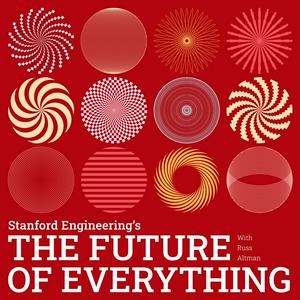
Descarga la app gratuita: radio.es
- Añadir radios y podcasts a favoritos
- Transmisión por Wi-Fi y Bluetooth
- Carplay & Android Auto compatible
- Muchas otras funciones de la app
Descarga la app gratuita: radio.es
- Añadir radios y podcasts a favoritos
- Transmisión por Wi-Fi y Bluetooth
- Carplay & Android Auto compatible
- Muchas otras funciones de la app


The Future of Everything
Escanea el código,
Descarga la app,
Escucha.
Descarga la app,
Escucha.
